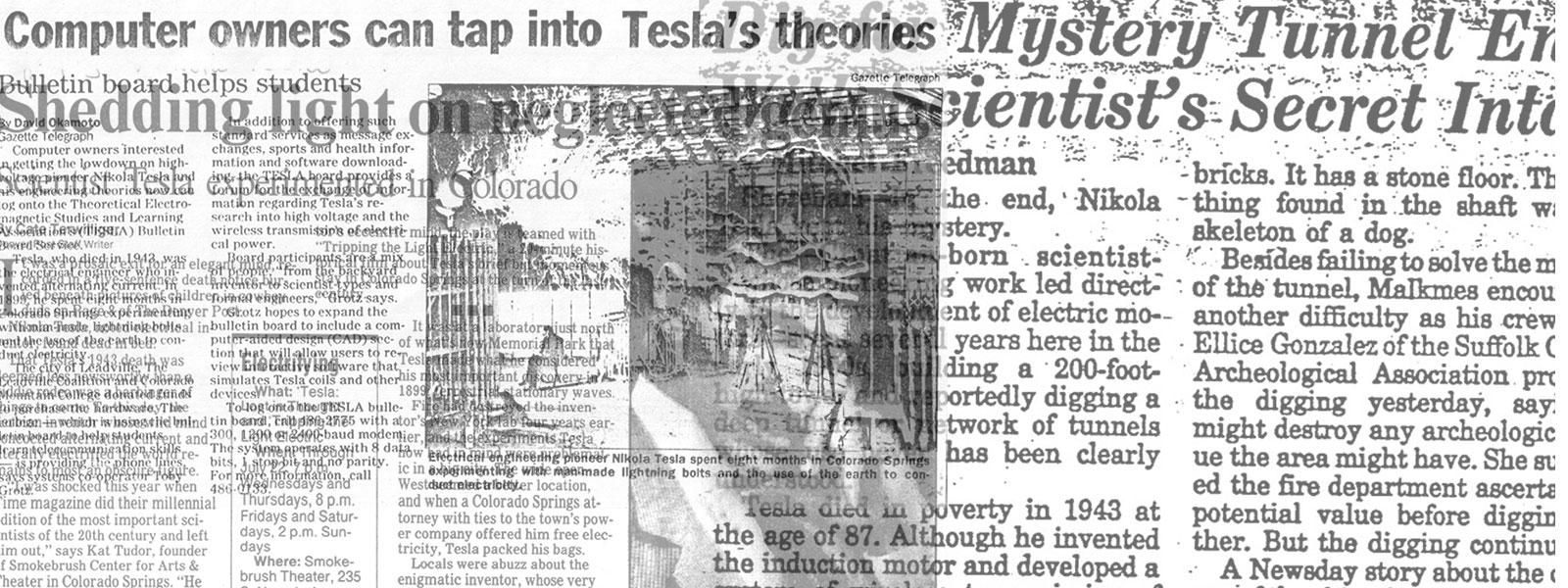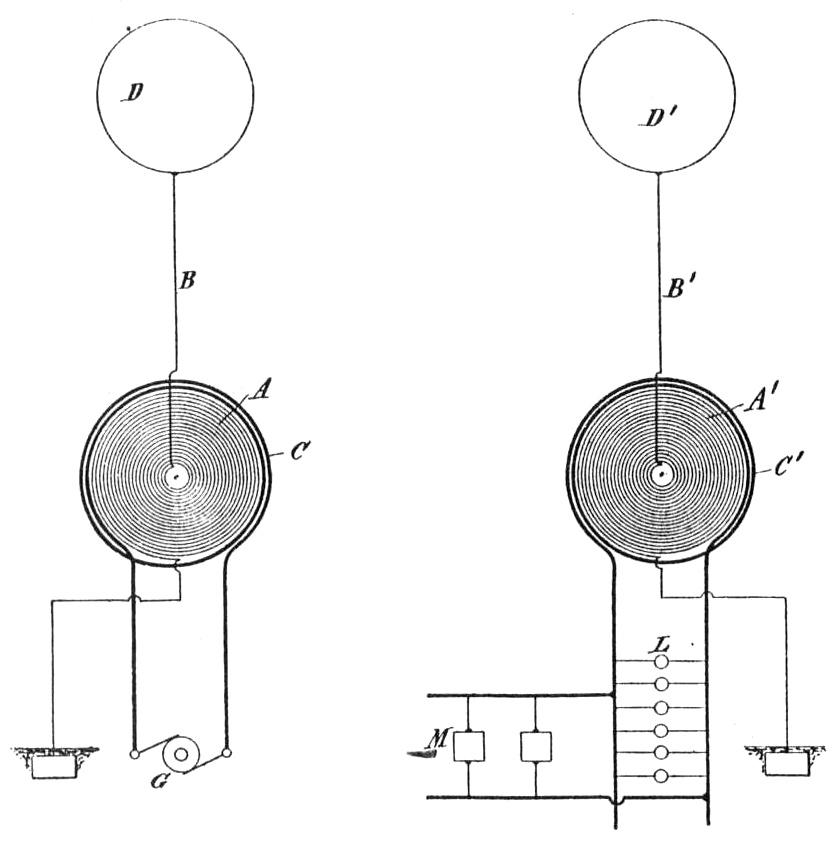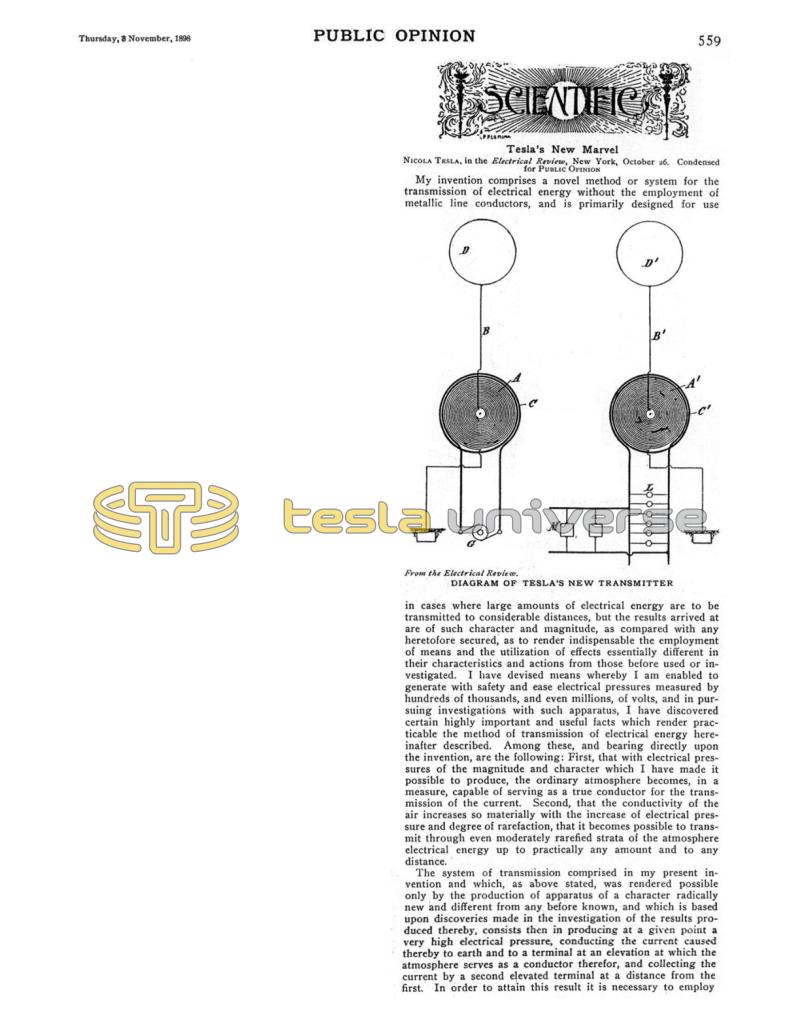
Nikola Tesla Articles
Tesla's New Marvel
Nicola [sic] Tesla, in the Electrical Review, New York, October 26. Condensed for PUBLIC OPINION
My invention comprises a novel method or system for the transmission of electrical energy without the employment of metallic line conductors, and is primarily designed for use in cases where large amounts of electrical energy are to be transmitted to considerable distances, but the results arrived at are of such character and magnitude, as compared with any heretofore secured, as to render indispensable the employment of means and the utilization of effects essentially different in their characteristics and actions from those before used or investigated. I have devised means whereby I am enabled to generate with safety and ease electrical pressures measured by hundreds of thousands, and even millions, of volts, and in pursuing investigations with such apparatus, I have discovered certain highly important and useful facts which render practicable the method of transmission of electrical energy hereinafter described. Among these, and bearing directly upon the invention, are the following: First, that with electrical pressures of the magnitude and character which I have made it possible to produce, the ordinary atmosphere becomes, in a measure, capable of serving as a true conductor for the transmission of the current. Second, that the conductivity of the air increases so materially with the increase of electrical pressure and degree of rarefaction, that it becomes possible to transmit through even moderately rarefied strata of the atmosphere electrical energy up to practically any amount and to any distance.
The system of transmission comprised in my present invention and which, as above stated, was rendered possible only by the production of apparatus of a character radically new and different from any before known, and which is based upon discoveries made in the investigation of the results produced thereby, consists then in producing at a given point a very high electrical pressure, conducting the current caused thereby to earth and to a terminal at an elevation at which the atmosphere serves as a conductor therefor, and collecting the current by a second elevated terminal at a distance from the first. In order to attain this result it is necessary to employ an apparatus capable of generating electrical pressures vastly in excess of any heretofore used, and to lead the current to earth and to a terminal maintained at an elevation where the rarefied atmosphere is capable of conducting freely the particular current produced; then, at a distant point, where the energy is to be utilized, to maintain a terminal at or about the same elevation to receive the current and to convey it to earth through suitable means for transforming and utilizing it. The apparatus which I have invented, and by means of which this method of transmission may be effected, is represented in the accompanying drawing, which is a diagrammatic illustration of the system, each transformer comprising a spiral conductor with many turns shown in fine lines surrounded by a conductor indicated in heavy lines with a very few convolutions.
The secondary coil is built up as usual, the wire being wound around an insulating core or spool until its convolutions fill up the space and form one complete layer. The winding is continued in the same way until another layer is formed, and so on. When the desired length of secondary or high-tension coil is thus obtained, the primary or low-tension coil is wound outside of it, but this latter coil is composed of only a very few turns of wire or conductor, which is of much larger diameter of cross-section than the secondary wire. The transformer thus consists simply of two concentric coils, the inner coil having very many turns of fine wire, the outer coil a very few turns of coarse wire. From this plan of construction it follows that one of the high-tension terminals is at the center of the secondary coil, and in the use of the coil the other terminal, whether it be connected to ground or not, is electrically connected to the primary, in order that there may be no material difference of potential between the latter and the adjacent convolutions of the secondary. It will be understood that either or both of the coils or transformers and terminals may be movable, as, for instance, when carried by vessels floating in the air, or by ships at sea. In the former case the connection of one terminal with the ground might not be permanent, but might be intermittently or inductively established without departing from the spirit of the invention.

